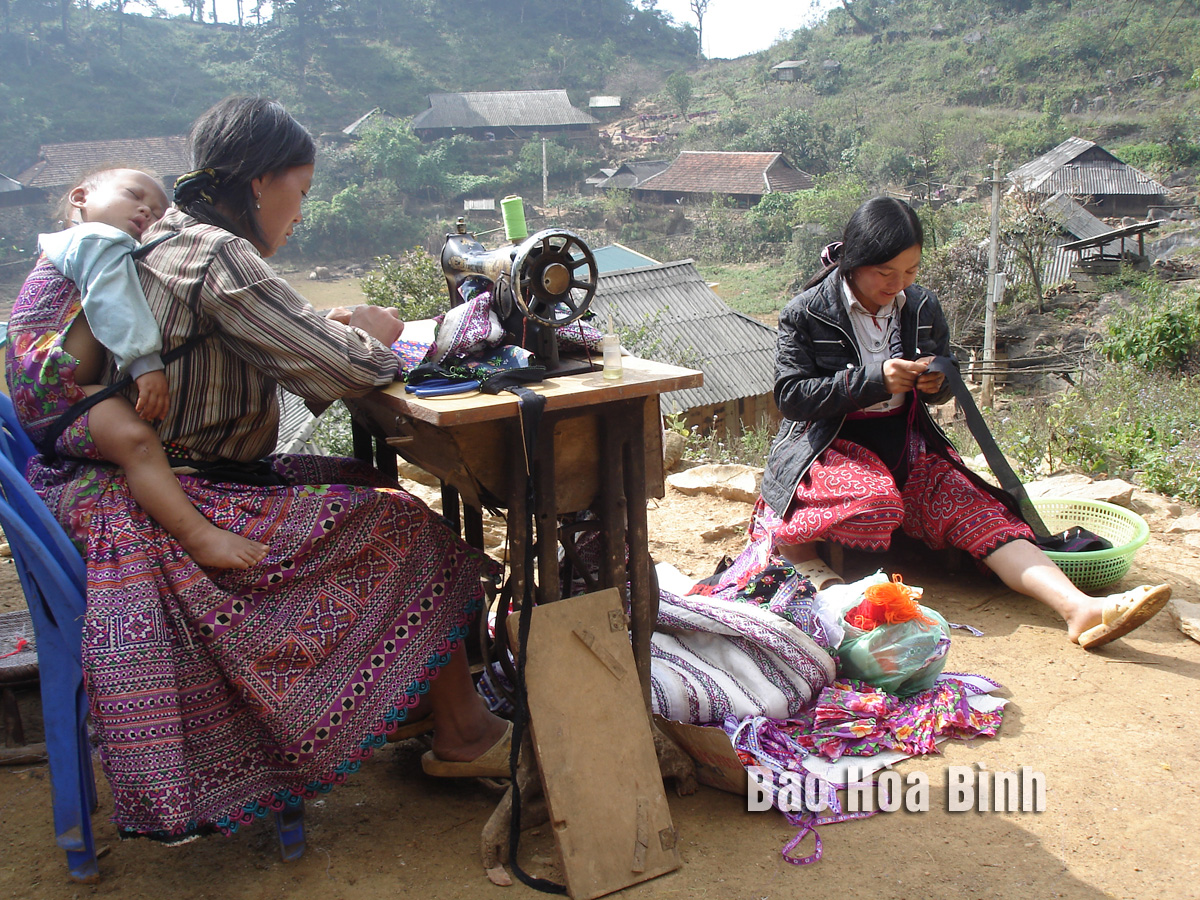
Hang Kia and Pa Co communes of Mai Chau district are home to a large number of Mong people, who are known for the traditional craft of brocade weaving - an essence of their ethnic group.
Mong women in Hang Kia commune of Mai Chau district still uphold the traditional brocade weaving to create costumes deeply imbued with their ethnic group's cultural identity.
Located about 40km from the district's centre, this region's mountainous terrain sits over 500 meters above sea level, with the highest peak reaching 1,500 meters in the Hang Kia - Pa Co Nature Reserve. For generations, local Mong women have meticulously maintained their heritage through the intricate process of brocade weaving.
Sung Y Mua, a woman in Hang Kia hamlet of Hang Kia commune, said Mong women take immense pride in creating their traditional clothing, a labour-intensive nd time-consuming process requiring skills, patience, and dedication. From growing flax to weaving on handlooms, every step is done manually. The colorful brocade patterns they produce are rich in cultural symbolism, reflecting the aspirations and unique culture of the Mong people.
In Hang Kia and Pa Co, it is common to see Mong women working on brocade during their daily routines. Even while walking to the market or fields, they can be seen spinning flax fibres into thread. The fabric is later boiled, washed, and sun-dried multiple times before it is ready for drawing and embroidery. The entire process, from weaving to embroidering intricate and colourful designs, takes about a month.
A wide range of products made from brocades are sold by Mong women at a common market of Hang Kia and Pa Co communes, Mai Chau district.
Traditionally, brocade fabrics were used to make everyday clothing for family members. However, with the rise of tourism, brocade products have become popular souvenirs, thus enhancing the region's appeal. Improved roads from Mai Chau's centre to Hang Kia and Pa Co have also boosted goods flows, enabling brocade products of Mong people to reach a wider market. Today, many households still maintain weaving looms, and some, like Vang Y Danh in Hang Kia hamlet of Hang Kia commune, have invested in industrial sewing machines to produce a wider range of brocade items.
Mai Chau district is committed to preserving this cultural heritage by promoting the traditional craft through tourism and socio-economic development projects aimed at supporting ethnic minorities.
With an increasingly vibrant and widespread emulation movement aimed at building cultured residential areas and cultured families, Yen Thuy District has been making steady progress toward improving both the material and spiritual well-being of its people, while fostering a civilized, prosperous, beautiful, and progressive community.
Once lacking recreational spaces and community facilities, Residential Group 2 in Quynh Lam Ward (Hoa Binh City) has recently received attention for the construction of a new, spacious, and fully equipped cultural house. The project followed the model of state support combined with public contributions in both labor and funding.
The "All people unite to build cultural life" movement, which has been effectively integrated with Kim Boi district’s socio-economic development goals, is fostering a lively spirit of emulation across local residential areas, hamlets, villages, public agencies, and enterprises. In addition, through the initiative, traditional cultural values are being preserved and promoted, while community solidarity and mutual support in poverty reduction and economic development are being strengthened.
A working delegation of the Hoa Binh provincial People’s Committee led by its Permanent Vice Chairman Nguyen Van Toan on June 11 inspected the progress of a project to build the Mo Muong Cultural Heritage Conservation Space linked to tourism services in Hop Phong commune, Cao Phong district.
Born and growing in the heroic land of Muong Dong, Dinh Thi Kieu Dung, a resident in Bo town of Kim Boi district, in her childhood was nurtured by the sweet lullabies of her grandmother and mother. These melodies deeply imprinted on her soul, becoming an inseparable part of her love for her ethnic group's culture. For over 20 years, this love for her hometown has driven Dung to research, collect, and pass down the cultural values of the Muong people to future generations.
In the final days of May, the Ethnic Art Troupe of Hoa Binh Province organized performances to serve the people in remote, mountainous, and particularly disadvantaged areas within the province. These were not just ordinary artistic shows, but they were the meaningful journeys aimed at spreading cultural values, enhancing the spiritual life of the people and contributing to the preservation of ethnic minority cultural identities.




